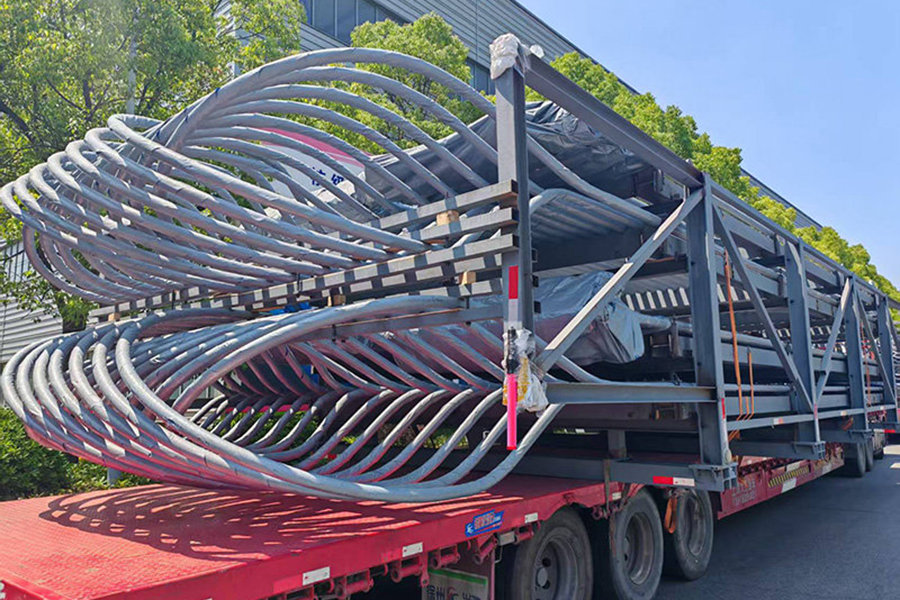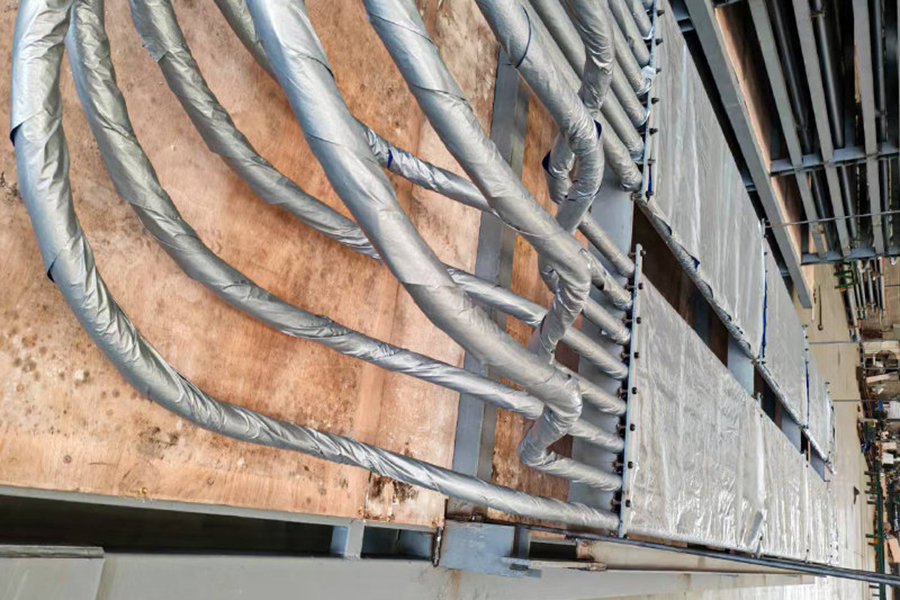Jiakaicheng Wealth Center, Financial Third Street, Jiangsu Province, China
Home > Products >
Tube coil
Tube bundles are essential components in heat exchangers, particularly shell and tube heat exchangers, where they facilitate efficient heat transfer between two fluids.
- Order phone:+86-13814203326
- E-mail:chao@ytbst.com
Detail
Below is a detailed overview of their materials, production methods, applicable standards, and performance features:
Materials
Tube bundles are constructed from various materials to meet the demands of different applications and operating conditions. Common materials include:
- Stainless Steel: Such as 316 stainless steel, known for its corrosion resistance and durability.
- Carbon Steel: Used for its strength and suitability in high-pressure applications.
- Copper: Offers excellent thermal conductivity and is commonly used in applications requiring efficient heat transfer.
- Copper-Nickel: Combines the thermal conductivity of copper with the strength and corrosion resistance of nickel.
- Admiralty Brass: A type of brass alloy with good corrosion resistance properties.
- Titanium: Used in applications requiring high strength, low weight, and excellent corrosion resistance.
- Hastelloy and Inconel: High-performance alloys used in extreme environments, such as those with high temperatures or corrosive chemicals.
Production Methods
The production of tube bundles involves several key steps to ensure optimal performance and efficiency:
1. Installation of Tube Sheets and Tie Rods: One tube sheet is vertically placed and secured, followed by attaching tie rods to the tube sheet.
2. Installation of Spacers and Baffles: Spacers, baffles, and support plates are sequentially slid onto the tie rods, ensuring accurate positioning for a stable tube bundle framework.
3. Adjustment and Calibration: Components are checked for verticality and flatness during assembly, with adjustments made as necessary.
4. Insertion of Heat Exchange Tubes: Each heat exchange tube is inserted through the holes in the tube sheets and baffles, ensuring proper alignment and avoiding deformation or damage.
5. Insertion into the Shell: The entire tube bundle structure is placed into the heat exchanger shell, and the second tube sheet is installed at the other end.
6. Positioning and Welding: The tube sheet is aligned with the shell, and positioning welding is performed to stabilize the bundle, followed by circumferential welding.
7. Connection of Tube Ends: The ends of the heat exchange tubes are welded to the tube sheets, ensuring sealing and structural integrity.
Applicable Standards
Tube bundles are manufactured in compliance with various international and national standards to ensure reliability and safety:
- ASTM A608/A608M-20: Standard Specification for Centrifugally Cast Iron-Chromium-Nickel High-Alloy Tubing for Pressure Application at High Temperatures. This standard covers the requirements for high-alloy tubes made by the centrifugal casting process, intended for use under pressure at high temperatures. It specifies the chemical composition, mechanical properties, and testing requirements for these tubes.
- EN 10295:2002: Standard for heat-resistant steel castings for temperatures above 600°C, not applicable for pressure applications. It also applies to heat-resistant nickel and cobalt-based alloys. The standard specifies the chemical composition, mechanical properties, and testing requirements for these materials.
- DIN 4726: Standard for oxygen diffusion resistance in pipes.
- ISO 17455: Standard for oxygen diffusion resistance in pipes.
- EN ISO 15875: Standard for cross-linking level in PEX pipes.
- TEMA Standard: Tube bundles are designed in accordance with the TEMA
standard to prevent tube damage caused by flow-induced or acoustic vibrations.
Performance Features
Tube bundles are designed to deliver exceptional performance in various operating conditions. Key performance features include:
1. Efficient Heat Transfer: Optimized tube configuration and material selection ensure maximum heat transfer efficiency.
2. Corrosion Resistance: Materials are selected for their ability to withstand corrosive environments, ensuring long-term durability.
3. Mechanical Strength: High tensile strength and ductility ensure durability under extreme pressure conditions.
4. Compact Design: Tube bundles are designed to maximize heat transfer surface area while minimizing the overall size of the heat exchanger.
5. Long Service Life: Designed for extended operational life with minimal maintenance.
6. Reliability: Consistent performance in demanding environments, ensuring safe and efficient operation.
7. Versatility: Tube bundles can be customized to meet specific application requirements, including various tube configurations and materials.
8. Flow Arrangement: Counterflow arrangements, where fluids flow in opposite directions, are typically the most efficient for heat exchange.
9. Tube Configuration: Tubes can be arranged in inline or staggered configurations to optimize heat transfer efficiency and minimize pressure drop.
10. Support Structures: Baffles and support plates are incorporated into the design to increase fluid turbulence, enhancing the heat transfer coefficient and supporting the tubes against vibration.
These features make tube bundles essential for efficient heat management in various applications, including oil and gas processing, power generation, HVAC systems, chemical processing, petrochemical industry, marine applications, and the food and beverage industry.


